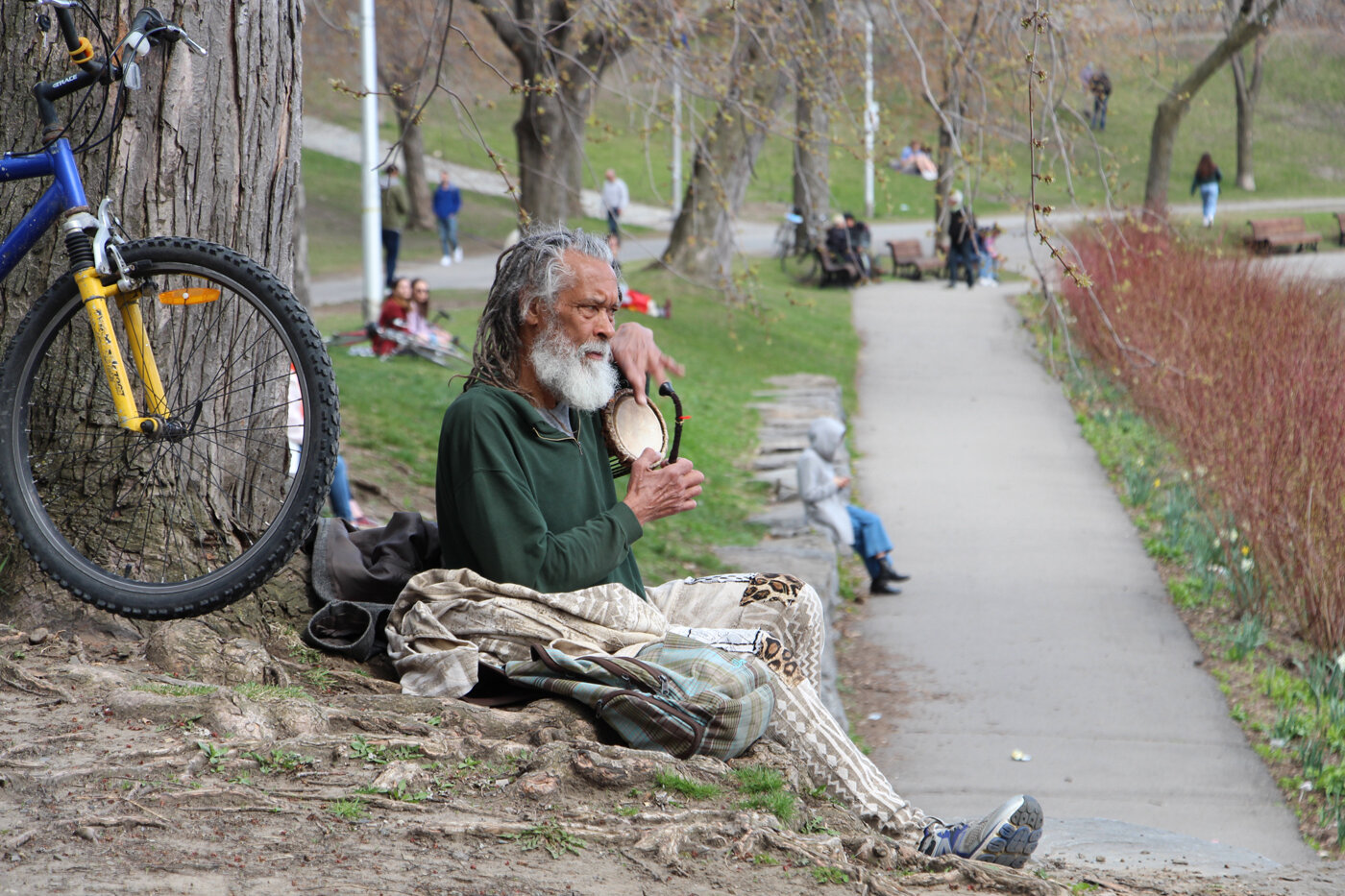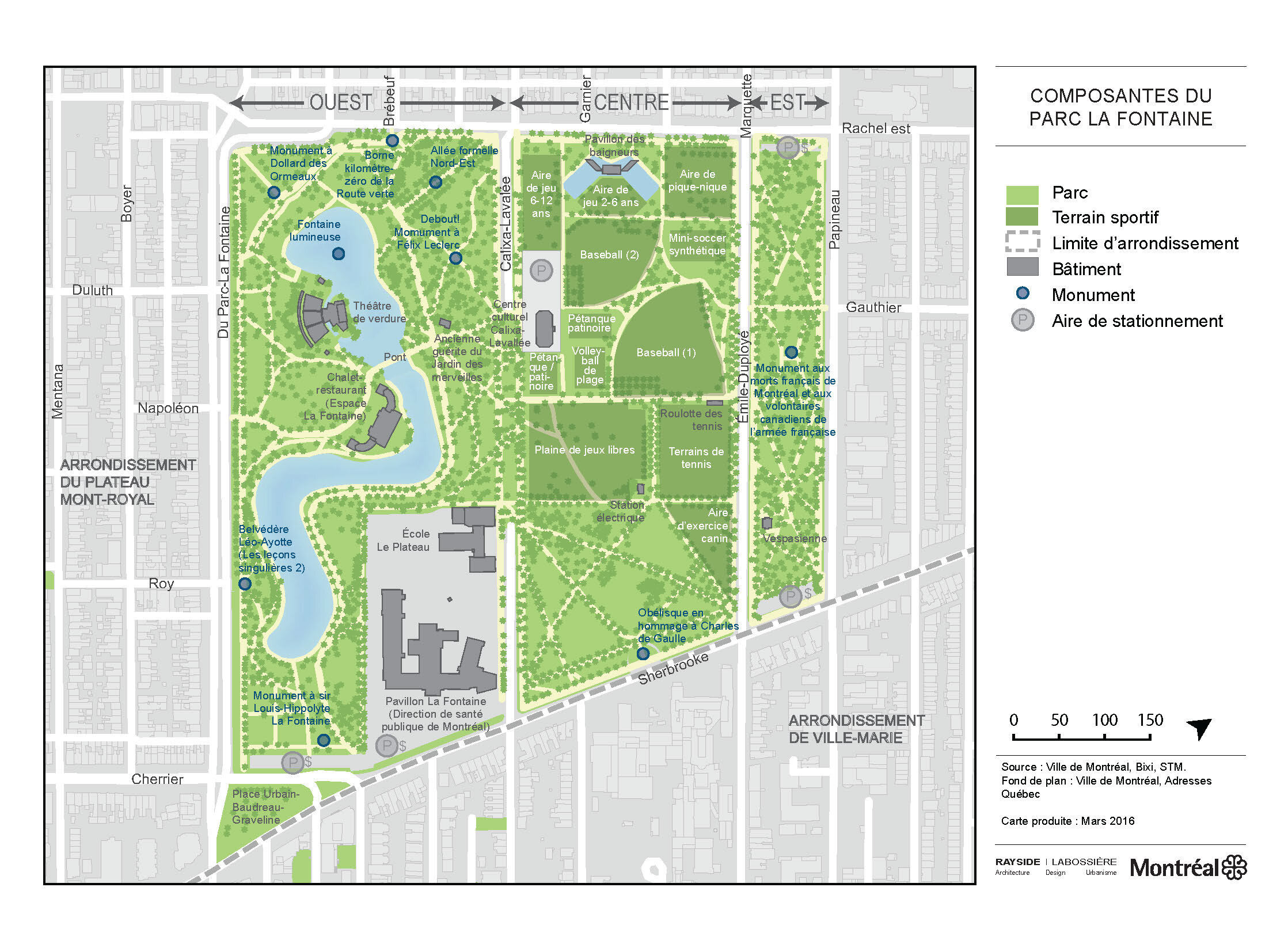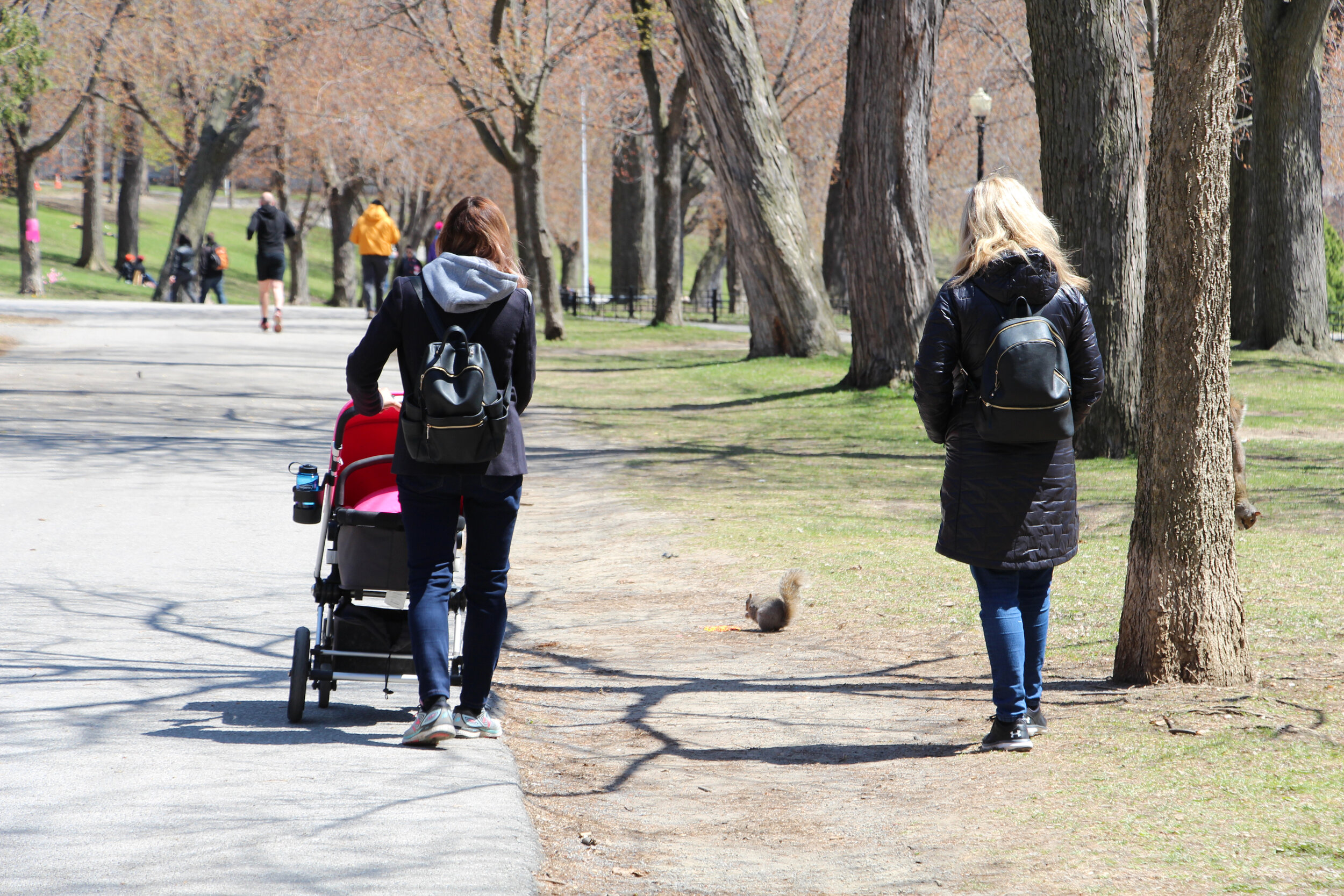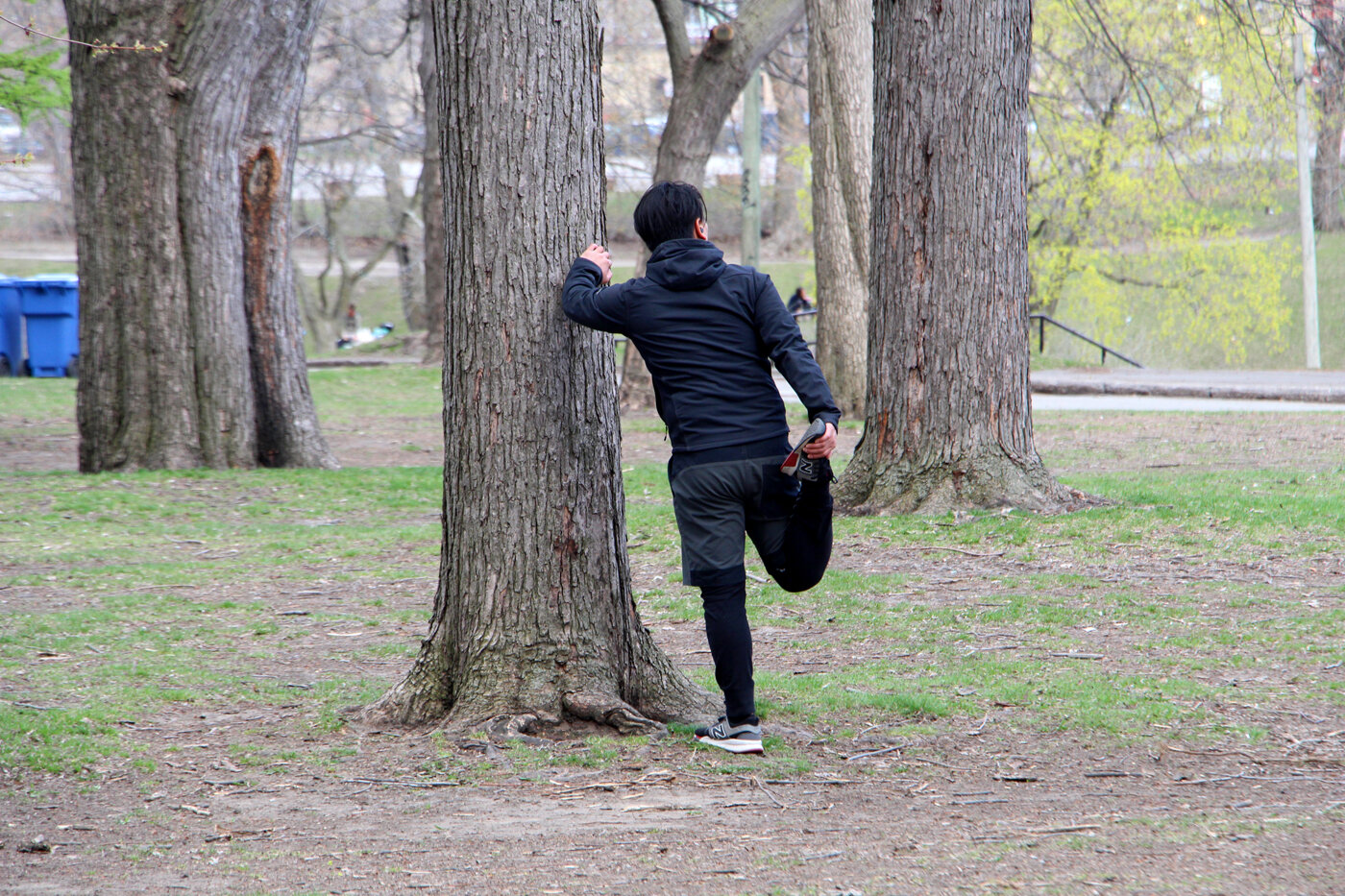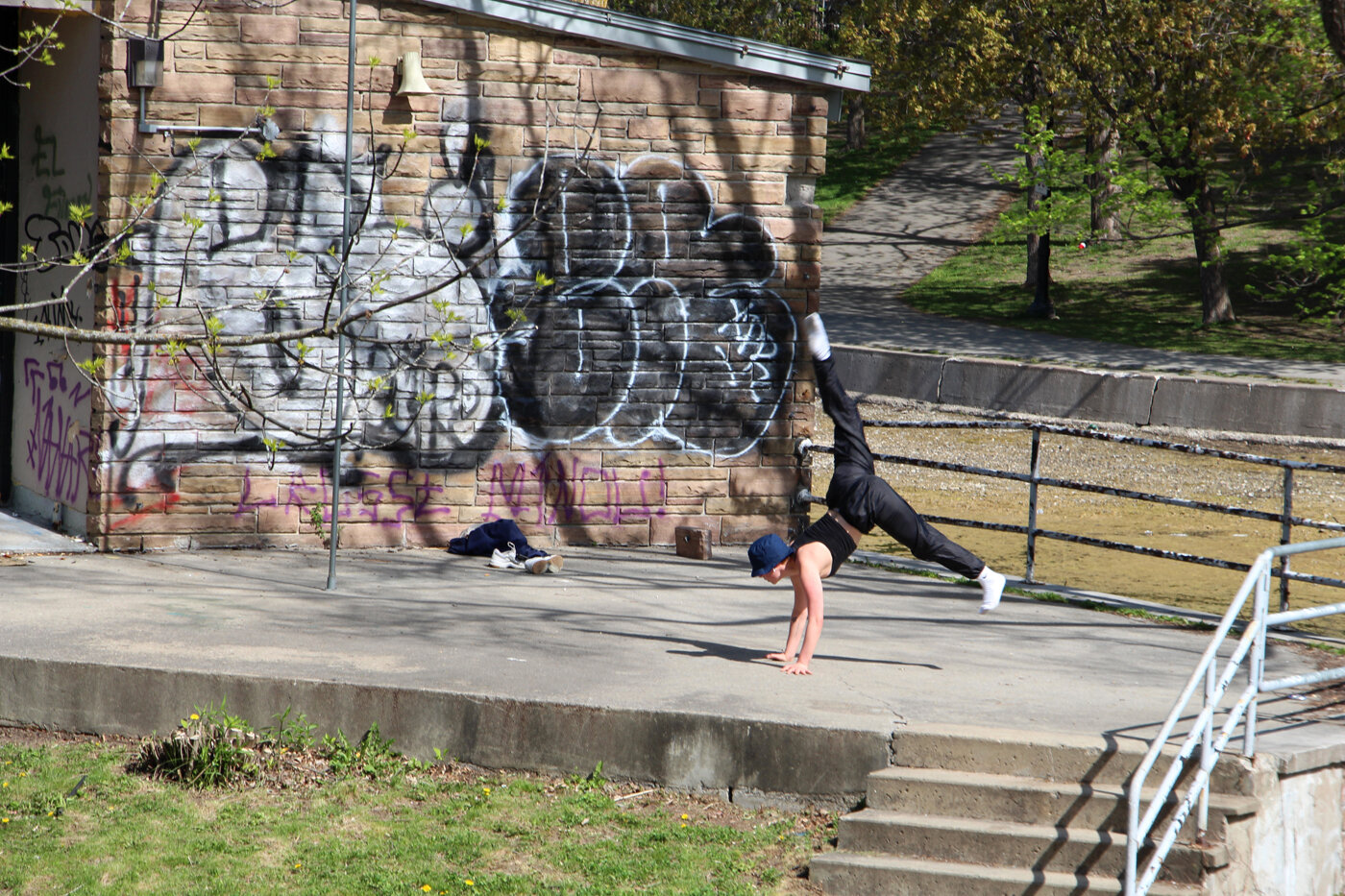Public parks: we need them now more than ever
PHOTOS CHRISTINE KERRIGAN (May 7 – May 25, 2020)
It was love at first sight* when I first stepped foot in Parc La Fontaine, an 84 acre urban oasis in the heart of my Plateau Mont-Royal neighbourhood. Since the COVID-19 pandemic began, my appreciation for the park and the value to its patrons has grown exponentially. Consequently, I feel compelled to write about the crucial role that this park plays in the daily lives of Montréal residents and visitors.
Some weeks ago, I signed a petition written by a Montréal resident requesting city officials to keep parks open during the pandemic. Truth be told, I'm not quick to sign petitions unless I believe 100% in the mission and this was one piece of paper on which I was happy to put my John Hancock.
Before the pandemic began, Parc La Fontaine was already part of my weekly routine, because I believe strongly in the restorative qualities of nature, prefer exercising outdoors rather than in a gym, and love the myriad of short stories I take in from observing human and animal interactions. I have also read from the piles of academic articles and scientific studies in areas such as biophilia, environmental psychology
and health, which illustrate the positive effects that nature has on the body and mind for stress reduction, attention restoration and wellbeing. In fact, an article in Urban Forestry and Urban Greening by Anna Conniff and Tony Craig on understanding the wellbeing and restorative benefits associated with greenspace provides a nice summary of several articles and scientific studies on this topic (Conniff et al., 2016).
Parc La Fontaine serves as a great example of the importance of integrating nature into the heart of our cities and it provides a variety of benefits to so many urban dwellers, especially in the midst of a pandemic. The park enjoys a reputation for being a very safe urban environment that is easily accessible via walking, wheeling, public transport and car. It is not only home to several species of plants, trees and animals, but also hosts two ponds linked together by waterfalls, a water fountain, an open-air theater (currently under renovation), playgrounds for kids, a cultural center, café and restaurant, baseball and soccer fields, beach volleyball courts, bocce ball courts, public tennis courts, walking paths, and bike paths.
Wandering through Parc La Fontaine in a pre-pandemic world, you would have been guaranteed to discover a wide variety of vignettes, varying greatly depending on the time of day, day of the week and season. On a summer's day in June, you may see and hear: bird watchers quietly observing sparrows and red-winged blackbirds chirping from one branch to another; kids and sports enthusiasts climbing tree branches and scaling large rocks; bicyclists and unicyclists wheeling through and around the park; dogs escorting their owners around the pond or to the doggie park for some social time; drum beats from local musicians in a pick-up jam session on a grassy slope; elderly couples out for an afternoon or evening stroll along the water's edge; the chatter of teenagers flocked together in small packs to trade news of the day; young kids squatting at the water's edge to witness baby ducklings speed paddling to catch up with their parents; friends and families spreading picnic blankets and lighting up BBQs; and circus performers juggling, balancing and flipping right side up and upside down (hey, this is the birthplace of Cirque du Soleil after all!). The mix of people who frequent the park is about as diverse as the activities they perform throughout the year. The show does still go on during the winter months (and it must as our winters are not short!).
As the snowflakes arrive, you're likely to find locals skating, sledding, walking, running, building creatures and sculptures from the rather generous mounds of snow, and biking. Yes, that's right, many Montréaler's do still wheel in winter.
Aside from specific events such as the annual Montréal marathon, there is not one main attraction that entices people to visit Parc La Fontaine, but rather, there are many. Since the park also boasts a generous dose of flora, fauna and nature features (i.e. green space and blue space), the environment positively contributes to the wellbeing of its visitors by stimulating all five senses, no matter your age, gender, income or cultural background.
Happily, the park has been kept open throughout the pandemic with the occasional passing of police on bikes to ensure that people are respecting social distancing measures. The perimeter of the park is wide open, so there are no fences and narrow entranceways to create potential pinch points, which could pose challenges for respecting the 2-meter social distancing standard. This issue of pinch points is something many other parks are currently facing, such as parks in NYC and Toronto, and leads us to question how the pandemic will influence park design for the near and distant future.
So what, if anything, has changed about the way people are using the space at Parc La Fontaine during the COVID-19 pandemic? While several areas and facilities designated for programmed activities are closed (e.g. sports fields, tennis courts, café, playgrounds, etc.), nature is still open for business. Schools are closed, so many parents are using the park as an outdoor classroom for their kids, which is wonderful to witness. For the most part and based on my frequent visits throughout the week, large groups of friends and community members are not gathering together, and instead, much smaller groups of people are using the park as a way to socialize at a safe distance, exercise, read, learn, work and relax. Musicians are still coming to play their instruments, adding that special sauce to the soundscape, which makes this park so unique. In fact, the other day, I observed a young girl showing her grandmother her latest dance moves as she shook her hands and hips to the beat of the drums playing in the background.
Some other cities, such as Toronto, have chosen to temporarily close down some urban parks due to fears of overcrowding and people not respecting social distancing measures. In fact, Toronto's High Park was completely shut down from April 30 to May 10 and residents faced hefty fines of $750-$5,000 if they choose to ignore the ordinance.
High Park, one of the largest parks in Toronto, is 398 acres and about half the size of Central Park in NYC. It's not only a famous spot for runners, walkers, dog walkers, nature enthusiasts, families, and a diverse group of residents, but also home to "Cherry Lane", housing a famous collection of cherry trees. These trees were donated to the City of Toronto and its residents in 1959 by the citizens of Tokyo as a symbol of friendship between Japan and Canada. According to city officials, the park closure was directly tied to the blossoming of the cherry trees, which attracts hoards of visitors every spring. The fear of overcrowding is understandable, but the closure was perhaps also in direct response to the many complaints and reports the City was receiving that some Torontonians were not respecting social distancing measures, removing barricades in places such as public workout facilities, and gathering in larger groups to play soccer and socialize. It's a shame that blatant disregard for some public safety measures can potentially lead to restricted park access for all.
The purple areas on the map indicate the locations of the cherry trees.
(Source : https://www.sakurainhighpark.com)
Although it's a nice gesture that the City of Toronto provided videos and online guided tours for residents to remotely witness the cherry trees in blossom, it's surely a far cry from experiencing a sea of pedals surfing the wind, brushing past your face and turning your head and shoulders into a human tarmac. I definitely understand the need to restrict the crowds, but would have hoped that the City of Toronto could have found a way to close off access to part of the park in order to still allow people to exercise, walk, have a moment of respite and enjoy nature. As you can see on a map, "Cherry Lane" comprises only a very small surface area of High Park. Furthermore, some local residents commented online that the park closure caused major crowding in the surrounding sidewalks as runners and walkers still attempted to exercise around the park.
No one really knows how long this COVID-19 pandemic will last, but we do know that it is not over yet and could last several more months or even years. During this time, urban residents need their parks to mitigate social isolation, exercise, breath fresh air, maintain healthy lifestyles, educate their kids, walk their dogs, listen to the birds, meditate, smell the flowers in bloom, people watch, play instruments, listen to music, work remotely, connect with nature, and so much more. I understand and support the need to close specific park facilities such as playgrounds and soccer fields, but my hope is that Parc La Fontaine and many other urban parks around the world will continue to remain open and accessible during the pandemic.
This COVID-19 pandemic has clearly demonstrated the importance of making parks and public spaces safe and accessible to all. As our cities become more densely populated in the years to come, I hope we will collectively continue to recognize the necessity of integrating urban parks with nature features into our neighbourhoods and communities to promote heath, happiness, wellbeing, but also to better support our ecosystem and make our communities more resilient to climate change. In addition to all of the benefits parks
with nature features bring to citizens and visitors, they also help improve air quality, offer cooling and shading, sequester carbon, help with storm water management, support biodiversity, and in some cases, can provide flood protection infrastructure.
Mother Nature is just starting to turn up the temperature dial here in Montréal and more and more locals will be heading to the parks. As Montrealers, let's demonstrate to our city officials that we can be trusted to self-police our behaviours and respect the 2-meter social distancing measures put in place. If we don't, the consequences could be dire and no one wants to see mass scale park closings (well, maybe apart from some animals who may enjoy having more space to themselves). Let's ensure that our parks continue to serve as a great environment for respite, health and wellbeing for all.
Now, it’s time for me to head to the park!
* This surely does not exclude the other senses as sound, smell, touch and taste factor into the entire experience.

